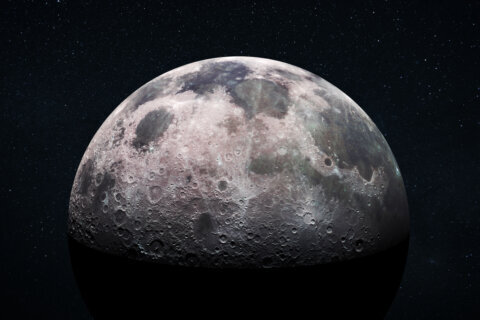If there are clear skies this Tuesday night, we will see a nice celestial event somewhat similar to what occurred in 2015, which was a full harvest supermoon total lunar eclipse.
In 2024, we get a full harvest supermoon partial lunar eclipse that will involve only about 8% of the full supermoon being in the Earth’s deep umbra shadow. The full Moon occurs at 10:35 p.m. EDT and the planet Saturn will be easily visible to the right of the moon as well.
The harvest full moon is the full moon that occurs closest to the Autumnal Equinox, which occurs on Sept. 22 at 8:43 a.m. EDT.
In days gone by, farmers used the light of the full moon to harvest their crops.
The term “supermoon” has made its way into everyday usage, but it is not an astronomical term. When the Moon orbits the Earth each month it passes a point where it is closest to our planet perigee, and farthest, apogee. When the full moon occurs within 24 hours of perigee it is a perigee full moon or what is now known as a supermoon. This supermoon is the second of four in a row.
As for the partial eclipse, per NASA:
“The Moon will start entering the Earth’s partial shadow at 8:41 p.m. EDT. The slight dimming of the Moon will be difficult to notice until the top edge of the Moon starts entering the full shadow at 10:13 p.m. The peak of the eclipse will be at 10:44 p.m. with only the top 8% of the Moon in full shadow. The Moon will finish exiting the full shadow at 11:16 p.m. and the partial shadow on Wednesday morning at 12:47 a.m.”
Get more details on the eclipse here.
The best place to see the eclipse is an area that has an unobstructed view of the eastern sky and is free of bright lights. Binoculars or a small telescope will help your view as you will be able to see the Moon far better than with the unaided eye.
You can take pictures of the eclipse if you have a camera and tripod. A zoom lens is a big help but almost any camera will capture the Earth’s shadow and the color of totality. You can get more information here.
If it is cloudy, you can tune in on the internet to see the eclipse courtesy of Italian astronomer and astronomy popularizer Gianluca Masi. He’ll livestream the show starting at 00:30 UT on Sept. 18 (8:30 p.m. EDT on Sept. 17).
Here’s to clear skies DMV! The next total lunar eclipse won’t be until March 13 and 14, 2025, and will be centered over the Americas.
Follow Greg Redfern on Facebook, X and his daily blog to keep up with the latest news in astronomy and space exploration.
Get breaking news and daily headlines delivered to your email inbox by signing up here.
© 2024 WTOP. All Rights Reserved. This website is not intended for users located within the European Economic Area.







